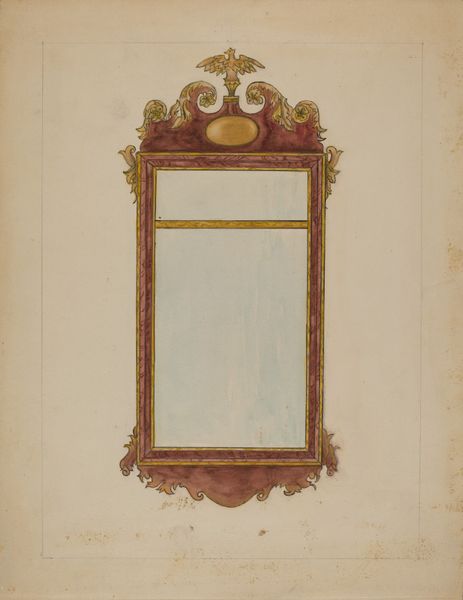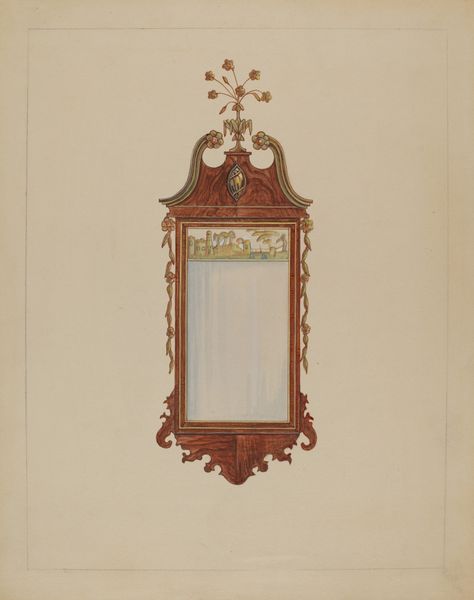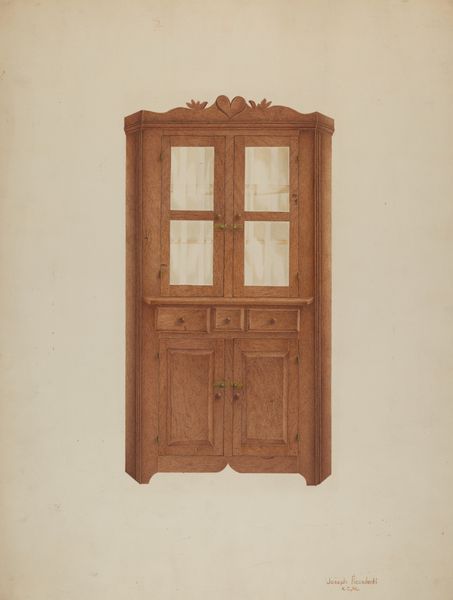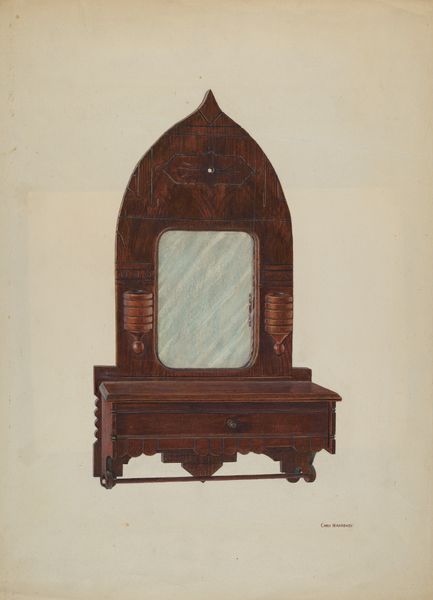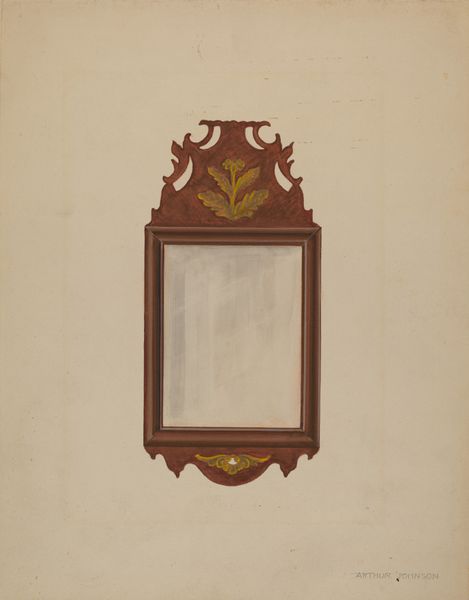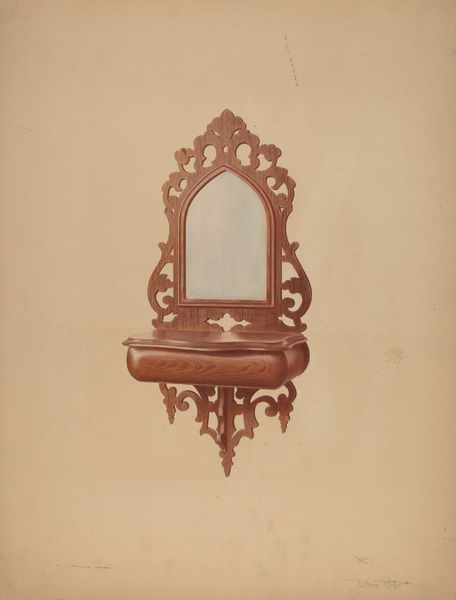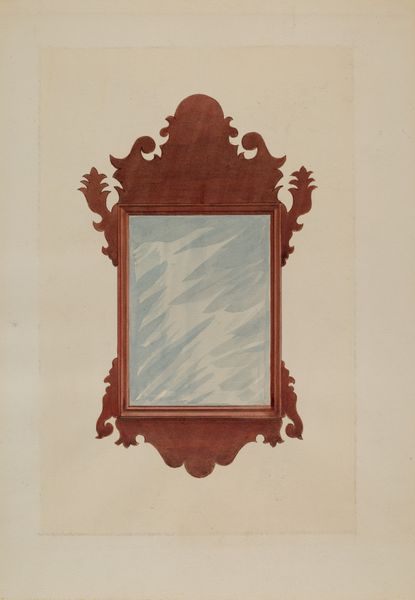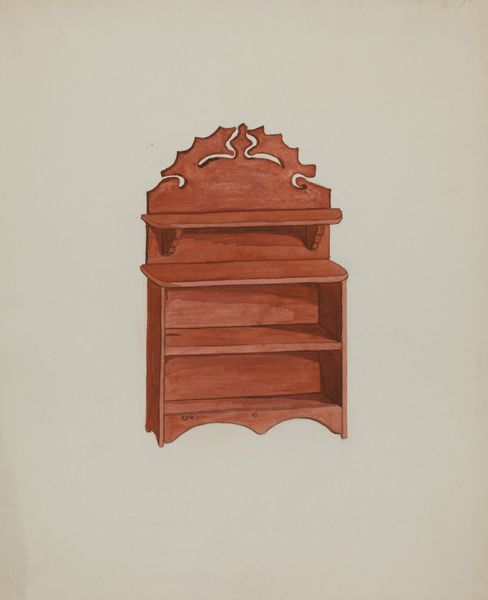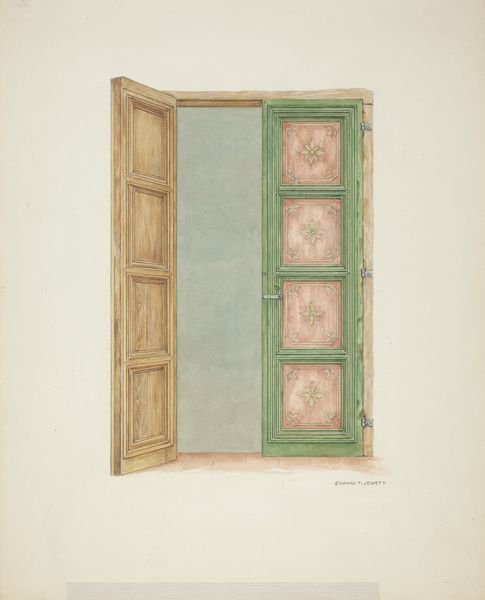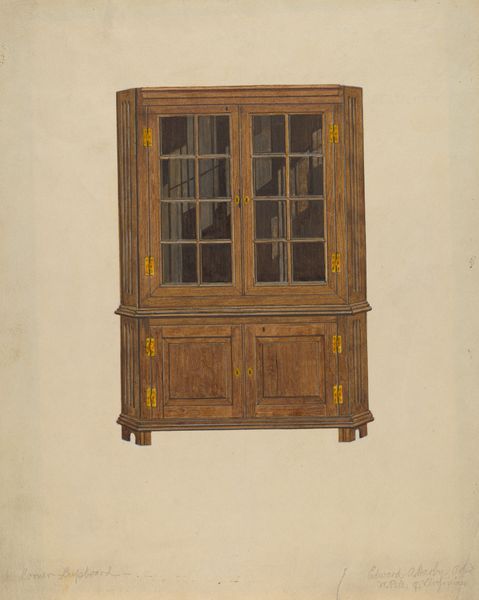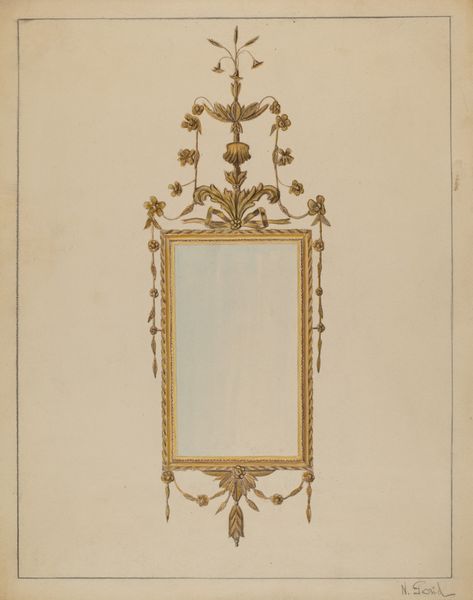
drawing, watercolor
#
drawing
#
watercolor
#
modernism
Dimensions: overall: 29.2 x 23.1 cm (11 1/2 x 9 1/8 in.) Original IAD Object: 22 3/4"high; 13"wide
Copyright: National Gallery of Art: CC0 1.0
Editor: So, here we have Francis Borelli's "Mirror," created around 1936. It’s a drawing and watercolor piece. The mirror itself looks pretty traditional in style, but the modernist tag makes me wonder what to look for beyond that. What's your take on this? Curator: It's fascinating to consider this piece within the context of the 1930s. Consider the socio-political landscape of the time – the Depression era, anxieties about identity and societal roles. How might a 'mirror,' an object so fundamentally linked to self-perception, resonate differently then? Editor: I hadn’t considered the context. Do you mean it's less about personal vanity and more about a broader social reflection? Curator: Precisely! Furthermore, Borelli presents it as a study of an object rather than its everyday purpose. This act of selection makes the common unusual. Are they just showing an object, or the representation of a symbol within domestic life? How was 'home' being reshaped, both physically and ideologically during the Depression era? Editor: That makes a lot of sense. The composition itself is quite straightforward; I'd never have picked up on these implications if I hadn't looked at the societal context. Curator: See also how Borelli chose watercolor and drawing - humble, accessible materials – maybe indicative of a certain ethos too? Do you think a more extravagant medium might change our perception? Editor: Absolutely! A painting using oils would give off a totally different message, seeming much more like decoration for the wealthy. It's remarkable how understanding the historical background can illuminate art in entirely new ways. Curator: Exactly. Considering art as an active participant in its own time period, changes how one see what would at first appear banal, or typical.
Comments
No comments
Be the first to comment and join the conversation on the ultimate creative platform.
